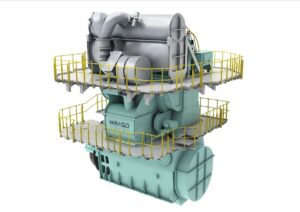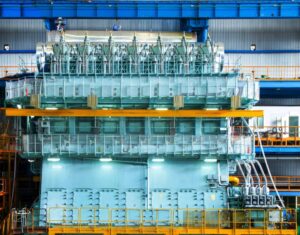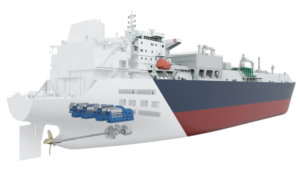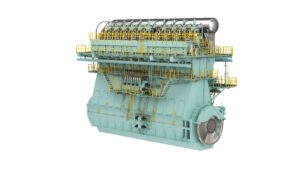World’s biggest dual-fuel, low-speed engine is here!
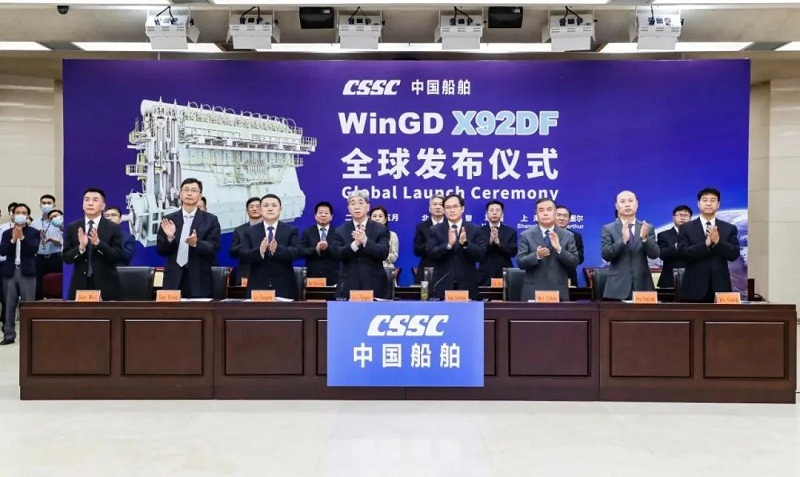
The world’s biggest dual-fuel, low-speed engine WinGD X92DF has been officially launched in China, China State Shipbuilding Corporation revealed.
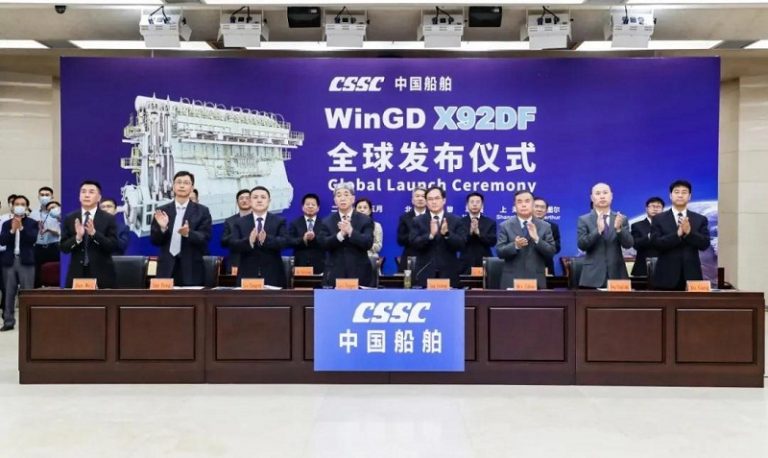
The engine was developed by Winterthur Gas & Diesel (WinGD), a subsidiary of CSSC, built by Shanghai CSSC Mitsui Shipbuilding Diesel Engine Co., and guaranteed by CSSC Marine Power Technology Service.
Class society Bureau Veritas awarded the type approval for WinGD’s dual-fuelled 12X92DF engines following a series of extensive full-load tests in diesel and gas operation.
A virtual ceremony on May 26 with guests joining from Beijing, Shanghai, Marseille, Paris and Winterthur marked the landmark moment for the ground-breaking engine technology, which has brought the use of LNG as a marine fuel into an entirely new vessel sector.
Fanpei Lei, Chairman/Party Secretary at China State Shipbuilding Corp., said the development of the engine was in line with the industry’s decarbonization mission and ‘injects new power’ into the development of global shipbuilding industry while marking a significant step for Chinese ship power research and development.

The engine is designed for modern large and ultra-large container vessels, and will power nine ULCS owned by the CMA CGM Group.
Back in 2017, French shipping major CMA CGM chose WinGD’s 12X92DF engines for nine of its 23,000 TEU containerships. The USD 1.2 billion worth containerships are scheduled to start delivery in 2020.
“CMA CGM’s ground-breaking choice in favour of LNG is a major step forward and a clear illustration of our resolute commitment to environmental protection and to the energy transition of the maritime industry. This certification is a major milestone as it marks the recognition of the technological efficiency of our dual-fuel engine project,” CMA CGM said.
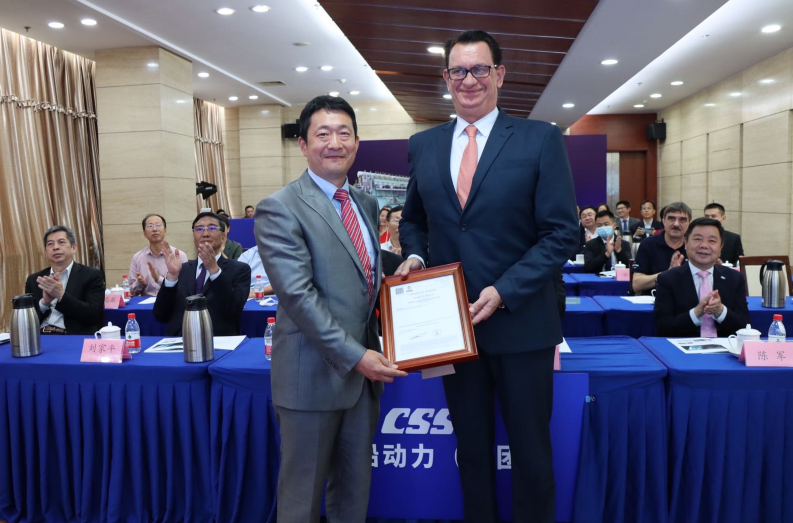
Olivier Cartier, Technical Vice President, Bureau Veritas, said that the certification of WinGD’s 12X92DF engine was a long process due to the size and complexity of the engine.
“We mobilized our worldwide teams of engine specialists, especially in China, in France and in Germany, at each of the critical phases of the certification process. Progressive Type Approval Tests were necessary where at each test significant progress and refinement were noted, so that we remained confident that final certification at 100% of the power using gas as fuel was an achievable objective – and this has now been achieved,” he said.
“
The WinGD X92DF integrates ultra-high power, intelligent monitoring as well as high environmental performance meeting IMO’s Tier III emission reduction requirements. In addition to conventional heavy-fuel oil or diesel oil, WinGD’s X-DF dual-fuel engines, use LNG gas, admitted at low-pressure and ignited by a low volume of liquid pilot fuel.
According to Dominik Schneiter, Vice President, for Research and Development at WinGD, the combination of Otto (lean burn) and Diesel cycle technology enables these engines to adapt for any of the potential sustainable fuels of the future making them a secure asset for a long time to come.
WinGD has received 320 orders for their X-DF engines including 60 in operation.
The company said that its X-DF model has been the best-selling dual-fuel low-speed engine technology in the maritime market since the second half of 2017.
Rated 63,840 kW at 80 rpm, the engine weighs over 2,100 tons.
Watch the engine construction timelapse in the video below:



